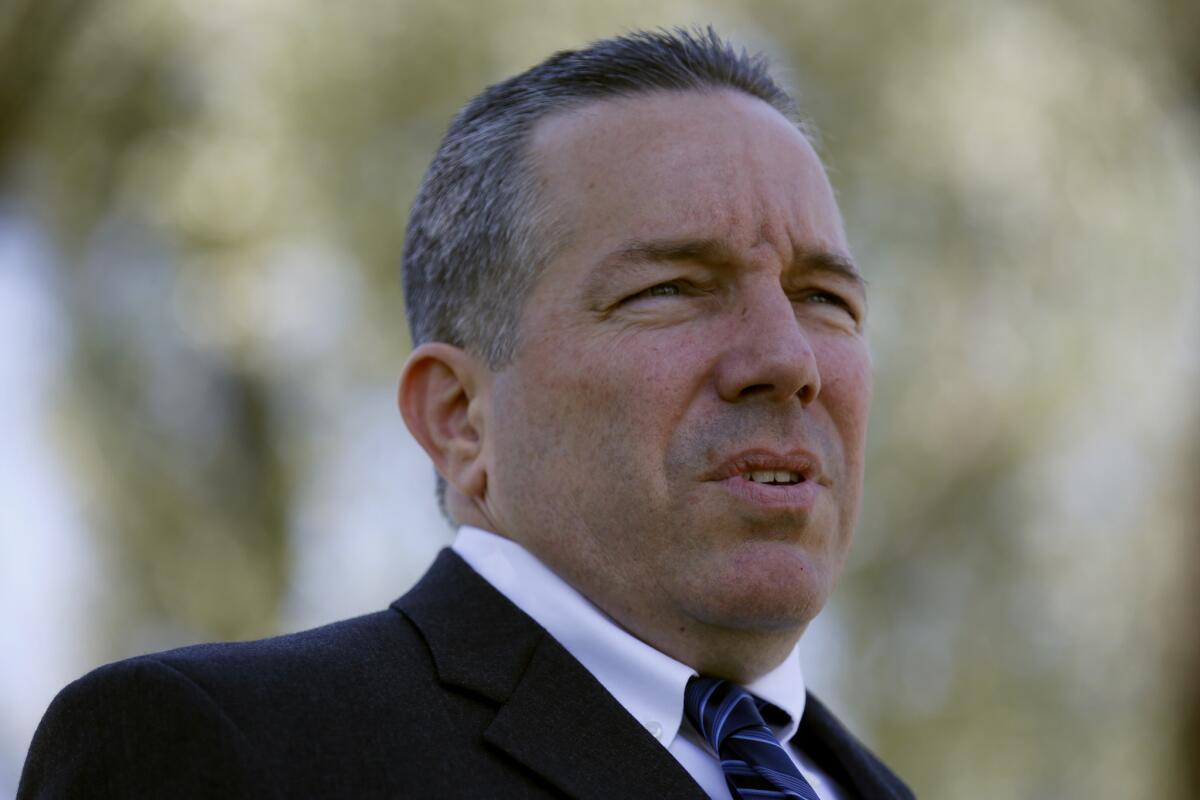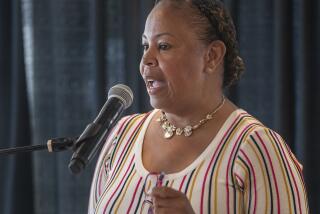L.A. supervisors remove Sheriff Alex Villanueva as head of emergency operations

When the deadly Woolsey fire erupted in 2018, Los Angeles County officials were unprepared for mass evacuations and other disruptions. Calls for mutual aid went unanswered. An audit last fall identified those shortcomings and recommended that in the future, the county should centralize coordination of its crisis response.
On Tuesday, the Board of Supervisors voted unanimously to put the county’s chief executive in charge of disaster preparedness and response. In doing so, the board removed Sheriff Alex Villanueva, who took office after the blaze, as head of the emergency operations center.
But the action, taken at the height of the deadly coronavirus outbreak, has raised questions about its timing and motive, and has once again highlighted the long-running power struggle between board members and the sheriff, who have clashed over a variety of issues, including hiring and spending, since Villanueva took office in December 2018.
Supervisors said the change was months in the making, proposed in a board motion in November, and is consistent with how many other counties in the state already operate.
But Villanueva called the move irresponsible, criticizing the timing during a global pandemic as “a brazen attempt to consolidate power” within the board. He said the change would only cloud the lines of communication and add an “unneeded layer of bureaucracy to life-or-death matters.”
“It’s not gonna add more ventilators, it’s not gonna add more masks out there to first responders, it definitely does not improve functions,” he said at Tuesday’s meeting, which was conducted via an audio broadcast. “When it comes to life-and-death matters, I don’t take it lightly.”
He told the board that its opposition to his candidacy for sheriff (several supervisors endorsed the incumbent former Sheriff Jim McDonnell) and his tenure in office “casts doubt on any decision made” that affects the Sheriff’s Department.
Supervisor Sheila Kuehl said it would be inappropriate for the sheriff to be wholly in charge of anything but law enforcement.
“This is not about him,” Kuehl said at the meeting. “It’s really about the safety of the 10 million people in L.A. County. So let me say that though the sheriff feels he is the only one speaking on behalf of county residents, he was not really elected to represent county residents. The five of us were.”
Some supervisors said the gesture would have little real practical impact, as the Office of Emergency Management is already running the overall pandemic response, which includes public health, housing, courts, parks and other services.
A county spokeswoman said the Sheriff’s Department staffs about 10 of the 150 people assigned to the emergency operations center.
After the vote, Villanueva released a statement saying he was waiting for a transition plan from the county, and in the meantime, would continue staffing the emergency operations center “until the county provides suitable replacements.” He provided no additional details on which sheriff’s personnel would be replaced.
The county’s chief executive, Sachi Hamai, postponed her plans to retire earlier this year to ensure “continuity of leadership” during the public health crisis, according to a letter she sent to supervisors.
“I will continue to serve in my current capacity until further notice,” she wrote in the March 18 letter.
The Assn. for Los Angeles Deputy Sheriffs opposed the supervisors’ change in November, with President Ron Hernandez calling it a “power grab to put the sheriff in check.”
On Tuesday, the union said in a statement that the sheriff and the board “need to stop squabbling when deputies, without the proper equipment, are risking their own health while serving the community.”
Michael Grossman, a former Sheriff’s Department chief who oversaw emergency operations before retiring seven years ago, said the law enforcement agency has a much larger staff and brings more resources to the table than the Office of Emergency Management.
Even so, the person at the helm need not have a law enforcement background, he said, as long as the structure is consistent. But he said the timing of the move is telling.
“In the middle of an operation, it would be difficult to change leaders, I think, not impossible,” he said. “Obviously there’s some dissatisfaction and lack of trust.”
In an interview last week, Villanueva said the idea that the move stems from the Woolsey fire audit is “absolute hogwash.” The fire took three lives and charred 97,000 acres in Los Angeles and Ventura counties.
“They purchased that opinion that supported what they wanted to achieve,” he said. “They want more power.”
Villanueva said that the timing suggests retaliation for his decision to close gun shops during the pandemic, viewing them as nonessential businesses.
He went back-and-forth on the order and ultimately decided Monday to keep gun shops open, citing an advisory from the federal government classifying them as essential businesses.
“The federal memorandum is persuasive given its national scope,” Villanueva said in a statement. “Based on this further input from the federal government, the Los Angeles County Sheriff’s Department will not order or recommend closure of businesses that sell or repair firearms or sell ammunition.”
Times staff writer Joseph Serna contributed to this report.
More to Read
Sign up for Essential California
The most important California stories and recommendations in your inbox every morning.
You may occasionally receive promotional content from the Los Angeles Times.











